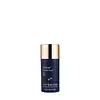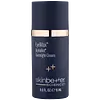What's inside
What's inside
 Key Ingredients
Key Ingredients

 Benefits
Benefits

 Concerns
Concerns

 Ingredients Side-by-side
Ingredients Side-by-side

Water
Skin ConditioningCaprylyl Methicone
Skin ConditioningGlycerin
HumectantJojoba Esters
EmollientNiacinamide
SmoothingPEG-16 Macadamia Glycerides
EmollientCetearyl Alcohol
EmollientGlyceryl Stearate
EmollientCeteareth-20
CleansingPEG-100 Stearate
Caprylic/Capric Triglyceride
MaskingAlcohol Denat.
AntimicrobialPalmitoyl Tripeptide-38
Skin ConditioningCaffeine
Skin ConditioningS-Mu-Conotoxin Cniiic Acetate
Skin ConditioningCopper Lysinate/Prolinate
Skin ConditioningHydrolyzed Lupine Protein
Skin ConditioningTerminalia Ferdinandiana Fruit Extract
AntioxidantMethylglucoside Phosphate
Skin ConditioningSodium Hyaluronate
HumectantSaccharomyces Cerevisiae Extract
Skin ConditioningArginine
MaskingGlycine
BufferingHydroxypropyl Cyclodextrin
MaskingCarbomer
Emulsion StabilisingHexylene Glycol
EmulsifyingCitric Acid
BufferingSodium Hydroxide
BufferingEthylhexylglycerin
Skin ConditioningCaprylyl Glycol
EmollientPhenoxyethanol
PreservativeWater, Caprylyl Methicone, Glycerin, Jojoba Esters, Niacinamide, PEG-16 Macadamia Glycerides, Cetearyl Alcohol, Glyceryl Stearate, Ceteareth-20, PEG-100 Stearate, Caprylic/Capric Triglyceride, Alcohol Denat., Palmitoyl Tripeptide-38, Caffeine, S-Mu-Conotoxin Cniiic Acetate, Copper Lysinate/Prolinate, Hydrolyzed Lupine Protein, Terminalia Ferdinandiana Fruit Extract, Methylglucoside Phosphate, Sodium Hyaluronate, Saccharomyces Cerevisiae Extract, Arginine, Glycine, Hydroxypropyl Cyclodextrin, Carbomer, Hexylene Glycol, Citric Acid, Sodium Hydroxide, Ethylhexylglycerin, Caprylyl Glycol, Phenoxyethanol
Water
Skin ConditioningPropanediol
SolventIsocetyl Stearoyl Stearate
EmollientGlyceryl Stearate
EmollientC10-18 Triglycerides
EmollientGlycerin
HumectantJojoba Esters
EmollientNiacinamide
SmoothingEthylhexyl Olivate
Skin ConditioningPolyglyceryl-6 Palmitate/Succinate
EmulsifyingCoco-Caprylate/Caprate
EmollientHydroxypropyl Starch Phosphate
Cetearyl Alcohol
EmollientTriheptanoin
Skin ConditioningButylene Glycol
HumectantDimethyl Isosorbide
SolventEthyl Lactyl Retinoate
AbrasiveAcetyl Hexapeptide-37
Skin ConditioningSodium Hyaluronate
HumectantGlyceryl Glucoside
HumectantLeontopodium Alpinum Flower/Leaf Extract
Skin ConditioningChamomilla Recutita Flower Extract
MaskingAstaxanthin
Skin ConditioningHaematococcus Pluvialis Extract
AntioxidantCrataegus Monogyna Flower Extract
Skin ConditioningJasminum Sambac Flower Extract
MaskingTocopheryl Acetate
AntioxidantHydrolyzed Jojoba Esters
Skin ConditioningTremella Fuciformis Extract
HumectantTocopherol
AntioxidantPotassium Cetyl Phosphate
EmulsifyingSucrose Stearate
EmollientC9-12 Alkane
SolventGluconolactone
Skin ConditioningCalcium Gluconate
HumectantPolyurethane-10
Ethylhexylglycerin
Skin ConditioningAmmonium Polyacryloyldimethyl Taurate
Emulsion StabilisingSodium Phytate
Citric Acid
BufferingPhenoxyethanol
PreservativeSodium Benzoate
MaskingPotassium Sorbate
PreservativeWater, Propanediol, Isocetyl Stearoyl Stearate, Glyceryl Stearate, C10-18 Triglycerides, Glycerin, Jojoba Esters, Niacinamide, Ethylhexyl Olivate, Polyglyceryl-6 Palmitate/Succinate, Coco-Caprylate/Caprate, Hydroxypropyl Starch Phosphate, Cetearyl Alcohol, Triheptanoin, Butylene Glycol, Dimethyl Isosorbide, Ethyl Lactyl Retinoate, Acetyl Hexapeptide-37, Sodium Hyaluronate, Glyceryl Glucoside, Leontopodium Alpinum Flower/Leaf Extract, Chamomilla Recutita Flower Extract, Astaxanthin, Haematococcus Pluvialis Extract, Crataegus Monogyna Flower Extract, Jasminum Sambac Flower Extract, Tocopheryl Acetate, Hydrolyzed Jojoba Esters, Tremella Fuciformis Extract, Tocopherol, Potassium Cetyl Phosphate, Sucrose Stearate, C9-12 Alkane, Gluconolactone, Calcium Gluconate, Polyurethane-10, Ethylhexylglycerin, Ammonium Polyacryloyldimethyl Taurate, Sodium Phytate, Citric Acid, Phenoxyethanol, Sodium Benzoate, Potassium Sorbate
Ingredients Explained
These ingredients are found in both products.
Ingredients higher up in an ingredient list are typically present in a larger amount.
Cetearyl alcohol is a mixture of two fatty alcohols: cetyl alcohol and stearyl alcohol. It is mainly used as an emulsifier. Emulsifiers help prevent the separation of oils and products. Due to its composition, it can also be used to thicken a product or help create foam.
Cetearyl alcohol is an emollient. Emollients help soothe and hydrate the skin by trapping moisture.
Studies show Cetearyl alcohol is non-toxic and non-irritating. The FDA allows products labeled "alcohol-free" to have fatty alcohols.
This ingredient is usually derived from plant oils such as palm, vegetable, or coconut oils. There is debate on whether this ingredient will cause acne.
Due to the fatty acid base, this ingredient may not be Malassezia folliculitis safe.
Learn more about Cetearyl AlcoholCitric Acid is an alpha hydroxy acid (AHA) naturally found in citrus fruits like oranges, lemons, and limes.
Like other AHAs, citric acid can exfoliate skin by breaking down the bonds that hold dead skin cells together. This helps reveal smoother and brighter skin underneath.
However, this exfoliating effect only happens at high concentrations (20%) which can be hard to find in cosmetic products.
Due to this, citric acid is usually included in small amounts as a pH adjuster. This helps keep products slightly more acidic and compatible with skin's natural pH.
In skincare formulas, citric acid can:
While it can provide some skin benefits, research shows lactic acid and glycolic acid are generally more effective and less irritating exfoliants.
Most citric acid used in skincare today is made by fermenting sugars (usually from molasses). This synthetic version is identical to the natural citrus form but easier to stabilize and use in formulations.
Read more about some other popular AHA's here:
Learn more about Citric AcidEthylhexylglycerin (we can't pronounce this either) is commonly used as a preservative and skin softener. It is derived from glyceryl.
You might see Ethylhexylglycerin often paired with other preservatives such as phenoxyethanol. Ethylhexylglycerin has been found to increase the effectiveness of these other preservatives.
Glycerin is already naturally found in your skin. It helps moisturize and protect your skin.
A study from 2016 found glycerin to be more effective as a humectant than AHAs and hyaluronic acid.
As a humectant, it helps the skin stay hydrated by pulling moisture to your skin. The low molecular weight of glycerin allows it to pull moisture into the deeper layers of your skin.
Hydrated skin improves your skin barrier; Your skin barrier helps protect against irritants and bacteria.
Glycerin has also been found to have antimicrobial and antiviral properties. Due to these properties, glycerin is often used in wound and burn treatments.
In cosmetics, glycerin is usually derived from plants such as soybean or palm. However, it can also be sourced from animals, such as tallow or animal fat.
This ingredient is organic, colorless, odorless, and non-toxic.
Glycerin is the name for this ingredient in American English. British English uses Glycerol/Glycerine.
Learn more about GlycerinGlyceryl Stearate is a mix of glycerin and stearic acid.
It is used to stabilize the mixing of water and oil ingredients. By preventing these ingredients from separating, it can help elongate shelf life. It can also help thicken the product's texture.
As an emollient, it helps soften skin and supports barrier-replenishing ingredients.
In cosmetics, Glyceryl Stearate is often made from vegetable oils or synthetically produced.
This ingredient may not be fungal-acne safe
Fun fact: The human body also creates Glyceryl Stearate naturally.
Learn more about Glyceryl StearateJojoba Esters is a wax created from Jojoba oil. It is an emollient and film-forming ingredient. In bead form, it is an exfoliator.
This ingredient has high oxidative stability, meaning it doesn't break down when exposed to oxygen.
Its similarity to our skin's natural oils makes it a great emollient. Emollients help soften and soothe our skin by creating a barrier on top. This barrier helps trap moisture in, keeping skin hydrated.
It is created using either the hydrogenation or transesterification processes on jojoba oil.
Learn more about Jojoba EstersNiacinamide is a multitasking form of vitamin B3 that strengthens the skin barrier, reduces pores and dark spots, regulates oil, and improves signs of aging.
And the best part? It's gentle and well-tolerated by most skin types, including sensitive and reactive skin.
You might have heard of "niacin flush", or the reddening of skin that causes itchiness. Niacinamide has not been found to cause this.
In very rare cases, some individuals may not be able to tolerate niacinamide at all or experience an allergic reaction to it.
If you are experiencing flaking, irritation, and dryness with this ingredient, be sure to double check all your products as this ingredient can be found in all categories of skincare.
When incorporating niacinamide into your routine, look out for concentration amounts. Typically, 5% niacinamide provides benefits such as fading dark spots. However, if you have sensitive skin, it is better to begin with a smaller concentration.
When you apply niacinamide to your skin, your body converts it into nicotinamide adenine dinucleotide (NAD). NAD is an essential coenzyme that is already found in your cells as "fuel" and powers countless biological processes.
In your skin, NAD helps repair cell damage, produce new healthy cells, support collagen production, strengthen the skin barrier, and fight environmental stressors (like UV and pollution).
Our natural NAD levels start to decline with age, leading to slower skin repair, visible aging, and a weaker skin barrier. By providing your skin niacinamide, you're recharging your skin's NAD levels. This leads to stronger, healthier, and younger looking skin.
Another name for vitamin B3 is nicotinamide. This vitamin is water-soluble and our bodies don't store it. We obtain Vitamin B3 from either food or skincare. Meat, fish, wheat, yeast, and leafy greens contain vitamin B3.
The type of niacinamide used in skincare is synthetically created.
Learn more about NiacinamidePhenoxyethanol is a preservative that has germicide, antimicrobial, and aromatic properties. Studies show that phenoxyethanol can prevent microbial growth. By itself, it has a scent that is similar to that of a rose.
It's often used in formulations along with Caprylyl Glycol to preserve the shelf life of products.
Sodium Hyaluronate is hyaluronic acid's salt form. It is commonly derived from the sodium salt of hyaluronic acid.
Like hyaluronic acid, it is great at holding water and acts as a humectant. This makes it a great skin hydrating ingredient.
Sodium Hyaluronate is naturally occurring in our bodies and is mostly found in eye fluid and joints.
These are some other common types of Hyaluronic Acid:
Learn more about Sodium HyaluronateWater. It's the most common cosmetic ingredient of all. You'll usually see it at the top of ingredient lists, meaning that it makes up the largest part of the product.
So why is it so popular? Water most often acts as a solvent - this means that it helps dissolve other ingredients into the formulation.
You'll also recognize water as that liquid we all need to stay alive. If you see this, drink a glass of water. Stay hydrated!
Learn more about Water